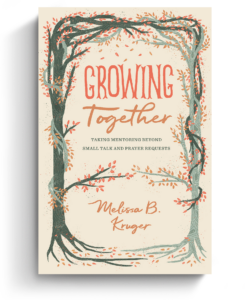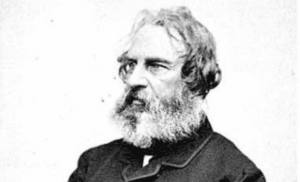If you’ve ever read through the Gospel of Mark, you may have come across an unusual note near the end of the book. For example, between 16:8 and 16:9, the ESV includes these words: “Some of the earliest manuscripts do not include 16:9–20.” The NIV and CSB include similar notes at the same place. Although there aren’t many places where such an intrusive note about several verses disrupts the text, this information can still be startling.
To put it in perspective, it’s important to know that including a note here is not a recent development in the history of the church. Christians have known for centuries that Mark 16:9–20 might not have originally been part of Mark’s Gospel.
One brother in Christ, a monk named Ephraim who lived in the 900s, wrote these words in a manuscipt of the Gospels between Mark 16:8 and 16:9: “In some of the copies, the evangelist finishes here, up to which (point) also Eusebius of Pamphilus made canon sections. But in many the following is also contained.”
We know about Ephraim because we still have several manuscripts he made. Some still have his signature. We can identify others by his handwriting and craftsmanship. Ephraim wasn’t the original author of these particular words. He regularly copied marginal notes that were already in the manuscripts he was using, and this note was one of them. And Ephraim’s manuscript isn’t the only copy of Mark that has this note between 16:8 and 16:9. There are at least 11 others in Greek. The note probably predates 10th-century Ephraim by a few hundred years.
Ephraim’s approach to the ending of Mark was the same as that of modern translations and editions. The Tyndale House Greek New Testament even prints Ephraim’s note as a word of caution that Mark 16:9–20 might not be original to Mark’s Gospel. In my judgment, this is the best solution.
Let me explain.
Evidence For Mark 16:9–20
Evidence for including these verses is staggering. When we look at the manuscripts of Mark’s Gospel that survive today, more than 99 percent contain Mark 16:9–20. This includes not only 1,600-plus Greek manuscripts, but most manuscripts of early translations of Mark as well.
In light of all the evidence in support of Mark 16:9–20, why would anyone question its authenticity?
Moreover, by around AD 180, Irenaeus unambiguously quoted Mark 16:19 as Scripture in Against Heresies (3.10.6). Justin Martyr and Tatian likely knew the verses earlier in the second century as well. Undeniably, Mark 16:9–20 was considered by many Christians early on to be a part of Mark’s Gospel.
In light of all the evidence in support of Mark 16:9–20, why would anyone question its authenticity?
Evidence Against Mark 16:9–20
There are effectively just two Greek manuscripts that lack Mark 16:9–20. These are codices Sinaiticus (ℵ01) and Vaticanus (B03), two important manuscripts from the fourth century. It’s almost unimaginable that the copyists who made them were unaware of Mark 16:9–20, but at the end of the day, they left it out of their Bibles.
Once we look beyond the question of ℵ01 and B03 against the other 1,600-plus Greek manuscripts of Mark, the picture becomes more complicated. At least 23 Greek manuscripts that include Mark 16:9–20 also have anomalies like extra endings or notes that express doubts concerning the authenticity of these verses. One important fourth-century Old Latin manuscript has a short addition after verse 8 and then ends without verses 9 to 20. A valuable Old Syriac manuscript from the fourth century also ends Mark at 16:8. A Sahidic Coptic manuscript (probably from the fifth century) ends Mark’s Gospel at 16:8 as well. In 1937, E. C. Colwell identified 99 Armenian manuscripts of Mark (of 220 surveyed) ending at 16:8, and a further 33 containing 16:9–20 but with notes expressing doubt about the verses’ authenticity.
At least 23 Greek manuscripts that include Mark 16:9–20 have anomalies like extra endings or notes that express doubts of the authenticity of these verses.
Further, though more than 99 percent of manuscripts available to us now contain Mark 16:9–20, it may not always have been this way. A Christian named Marinus wrote to Eusebius (c. AD 265–339) to ask for help resolving a perceived contradiction between Matthew and Mark. Marinus asked why Matthew (28:1) says Jesus appeared “late on the Sabbath,” but Mark (16:9) says Jesus appeared “early on the first day of the week.” Eusebius responded that one possible solution to this problem was simply to reject Mark 16:9 as not part of Mark’s Gospel. “[T]he accurate ones of the copies define the end of the history according to Mark [at 16:8] . . . in this way the ending of the Gospel according to Mark is defined in nearly all the copies.”
Think about that. Eusebius told a Christian whose Bible contained Mark 16:9–20 that “nearly all the copies” of Mark, including “the accurate ones” lacked these verses, so they might not be inspired Scripture. And Eusebius didn’t have a problem saying that! This was just life as a Christian in an age when copies of infallible Scripture were made by fallible hands. This was pastoral textual criticism, not some empty academic exercise.
Eusebius’s work was repeated both by Jerome (c. AD 347–419) and also Severus of Antioch (c. AD 465–534). Even though Jerome and Severus were clearly drawing from Eusebius’s work, nothing in their experience with manuscripts prevented them from repeating Eusebius’s claims that the majority of manuscripts (Jerome), or at least the most accurate ones (Jerome and Severus), lacked those verses. Independent of Eusebius, fifth-century father Hesychius of Jerusalem affirmed that “the more accurate copies” of Mark ended at 16:8 as well.
Scribes: More Likely to Add or Omit These Verses?
In the copying process, omissions were more likely than additions, but omissions are often short, often accidental, and there are many qualifications to this tendency. One such qualification is that material could be added when the change involved a harmonization to a parallel passage. In a broad sense, Mark 16:9–20 does just that; it takes the lone Gospel that lacks a post-resurrection appearance of Jesus and makes it like the other three.
More than that, we know that at least once, someone added Mark 16:9–20 to a text that lacked it. The compiler of a commentary from the 500s, attributed to Victor of Antioch, admitted that most copies he knew of didn’t contain Mark 16:9–20. However, in his opinion (unlike Eusebius), the “more carefully edited” ones did contain these verses, and as a result, he added 16:9–20 to his Gospel. Here is a place where one Christian didn’t accept the text he received—he added to it something he thought missing.
Because Mark 16:9–20 is undeniably early, is present in 99 percent of manuscripts, and has traditionally been considered canonical, I recommend keeping it in the text. But it’s probably not from Mark.
In short, it’s hard to explain why Mark 16:9–20 would ever be removed. Yet we find it missing in early manuscripts in multiple languages and absent in the majority of Greek manuscripts according to Eusebius, whose remarks were repeated by Jerome. It’s much easier to explain why 16:9–20 would be added to the only Gospel that seems like it’s missing something, which is precisely what the compiler of one sixth-century commentary did. Without 16:9–20, there’s an empty tomb, but where is Jesus? It seems to me the women leaving the tomb weren’t the only ones afraid to be left hanging.
Trusting God in the Face of Uncertainty
Because Mark 16:9–20 is undeniably early, is present in 99 percent of manuscripts, and has traditionally been considered canonical, I recommend keeping it in the text.
But it’s probably not from Mark.
Some have suggested that the verses might be apostolic, but not from Mark himself. The best solution in my judgment is that of Ephraim: include the verses, but with a word of caution explaining they may not be original. That keeps us honest about ancient Christians whose Bibles ended Mark at 16:8.
With or without Mark 16:9–20, the tomb is empty, Jesus has purchased our pardon, and we can be certain of that.
The verses are undeniably early and have been considered part of Scripture throughout the church since at least the second century. Still, a German monk banging on a Wittenberg door in 1517 might remind us that tradition isn’t always correct. The same group of Greek-speaking Christians who accepted Mark 16:9–20 as canon also accepted Psalm 151 as a canonical part of the Psalter, but I don’t know of any Protestants suggesting we should add that to our Bibles.
In his providence, God allowed many Christians to have copies of Mark that ended at 16:8. Not many of them have survived, but as far as we can tell, they were real Bibles used by real Christians in real churches where Christ was worshiped. If God’s promise to preserve his Word means he’ll make all of it available to us, and if that promise extends to Mark 16:9–20, did God fail these believers? May it never be! These Christians understood that God gave us the treasure of his gospel in jars of clay (2 Cor. 4:7), and part of that stewardship included making sense of divergent copies of Scripture. They trusted God to give them everything they needed—just as we should—even when his whole purposes remained unseen.
Mark 16:9–20 wouldn’t be the only account of Jesus’s bodily resurrection in Scripture, nor would it even be the earliest (Paul probably wrote 1 Cor. 15 in the mid-50s). Luke includes Jesus’s ascension in Luke and Acts. Even snake-handlers have nothing to lose if Mark ends at 16:8, because they could still interpret Paul’s encounter with the viper at Acts 28:3 as normative. (Not that they should!)
Uncertainty here makes us uncomfortable, but we lose nothing of our faith if Mark ends at 16:8, and God often calls us to trust him in the face of uncertainty. Without faith it’s impossible to please him, after all. Since faith is the assurance of things hoped for (Heb. 11:1), and seen hope is not real hope (Rom. 8:24), it wouldn’t be walking by faith if God answered all of our questions. That would be walking by sight. With or without Mark 16:9–20, the tomb is empty, Jesus has purchased our pardon, and we can be certain of that.
Author’s note: There is a third Greek manuscript (after ℵ01 and B03) that is often cited as lacking the ending of Mark, minuscule 304 (from the 12th century). Minuscule 304 is more precisely a manuscript of a commentary than a manuscript of the Greek New Testament. Although its biblical text ends at 16:8, the manuscript itself does pose some difficulties. It seems best, then, for our purposes (as a bird’s eye view of the evidence) to count 304 neither for nor against the 16:8 ending. Regardless of what one makes of it, 304 by itself isn’t sufficient to tip the scales one way or the other.
Involved in Women’s Ministry? Add This to Your Discipleship Tool Kit.
 We need one another. Yet we don’t always know how to develop deep relationships to help us grow in the Christian life. Younger believers benefit from the guidance and wisdom of more mature saints as their faith deepens. But too often, potential mentors lack clarity and training on how to engage in discipling those they can influence.
We need one another. Yet we don’t always know how to develop deep relationships to help us grow in the Christian life. Younger believers benefit from the guidance and wisdom of more mature saints as their faith deepens. But too often, potential mentors lack clarity and training on how to engage in discipling those they can influence.
Whether you’re longing to find a spiritual mentor or hoping to serve as a guide for someone else, we have a FREE resource to encourage and equip you. In Growing Together: Taking Mentoring Beyond Small Talk and Prayer Requests, Melissa Kruger, TGC’s vice president of discipleship programming, offers encouraging lessons to guide conversations that promote spiritual growth in both the mentee and mentor.




























